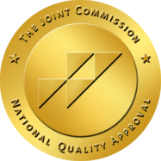
What Does CBT Therapy Treat?
Cognitive Behavioral Therapy for Addiction Treatment
What is CBT Therapy?
The American Psychological Association, or the APA, explains cognitive behavioral therapy as a compelling psychological treatment method for various issues - this includes depression, anxiety disorders, alcohol, and drug use problems, marital problems, eating disorders, and severe mental illness.1 Studies show CBT to be as effective as or more effective than alternative forms of therapy or psychiatric medication.2
What Does Cognitive Mean?
Cognitive is conscious brain activity, such as thinking and processing.3 Cognition can further be defined as the mental process or action of acquiring knowledge and understanding through thoughts, experiences, and senses.
Aaron Beck and the Creation of CBT
Born in 1921, Aaron Temkin Beck, MD. was an American Professor and Psychiatrist at the University of Pennsylvania. He is perceived as the father of cognitive therapy. His methods specialize in treating clinical depression.4
In 1997, Arron Beck created concepts based on cognitive behavioral therapy. He uncovered the relationship between disorders and disturbed thinking. This led to the ways in how distorted thinking directly impacts human behavior.
Types of CBT?
Cognitive therapy centers on identifying and changing inaccurate or distorted thinking patterns, emotional responses, and behaviors.5 Dialectical behavior therapy (DBT) addresses thoughts and behaviors while incorporating emotional regulation and mindfulness strategies.
Multimodal therapy suggests that an individual must treat psychological issues by addressing seven different but interconnected modalities: behavior, affect, sensation, imagery, cognition, interpersonal factors, and drug/biological considerations.
Rational emotive behavior therapy (REBT) involves identifying irrational beliefs, actively challenging these beliefs, and finally learning to recognize and change these thought patterns.
DBT vs. CBT
Dialectical Behavior Therapy (DBT) and CBT work on the patient\'s cognitive processes. When comparing the two, DBT differs in the strategies. DBT incorporates regulation and mindfulness over identifying and changing. DBT also sets limits for the patient to acknowledge the issue and evolve from it.
What Does CBT Therapy Treat?
CBT for Addiction Treatment
Cognitive-behavioral therapy strategies are long-term treatment solutions for mental health disorders which include addiction.6 The U.S. National Library of Medicine states, "Drug addiction manifests clinically as compulsive drug-seeking, drug use, and cravings that can persist and recur even after extended periods of abstinence. From a psychological and neurological perspective, addiction is a disorder of altered cognition."7 CBT therapy not only delivers effective results, but CBT is a more cost-effective method of treatment as well.
CBT for Depression Treatment
According to the U.S. National Library of Medicine, \"Negative automatic thoughts both trigger and enhance depression.8 It might be helpful to identify unhealthy automatic thoughts associated with symptoms of depression.\" Although depression is strongly impacted by imbalanced chemicals in the brain, it is also a direct result of unidentified feelings and negative thoughts. CBT therapy helps individuals identify negative thoughts that induce depression.
CBT for Anxiety Treatment
Anxiety is the sense of uneasiness or distress that the mind and body produce during stressful situations.9 CBT works best for anxiety treatment since the thoughts and actions of a person are the results of their perception. CBT encourages those with anxiety disorders to challenge their negative thoughts while also developing healthy coping mechanisms.
CBT for PTSD Treatment
Posttraumatic Stress Disorder, or PTSD, is a psychiatric disorder that stems from witnessing a traumatic event such as a natural disaster, war/combat, a serious injury, sexual assault, or any other life-altering experience. 10 According to the American Psychological Association, CBT can encourage patients to evaluate and identify unhelpful patterns in thoughts, resulting in more balanced and effective thinking patterns. CBT guides a patient to better understand the traumatic experience and find healthy ways to cope with it.10
CBT Techniques
The strategies and methods of CBT are designed to give patients a chance to change their thinking and their actions:
Negative Thoughts
Addressing negative thoughts allows the individual to acknowledge and identify how their thoughts, feelings, and actions contribute to any dysfunctional behavior. 11 Though this method is challenging, it leads to self-discovery and insight that plays a significant role in the treatment process.
New Skills
Learning and practicing new skills is useful as it can prompt socialization and coping skills while also reducing the risk of a relapse.11
Goals
This technique is a crucial component of CBT. Goal setting allows a patient recovering from mental illness to develop plans and establish milestones that require modifications to one's thinking, actions, and health.11 CBT focuses on goal-setting skills by teaching patients how to identify a goal, distinguish between short- and long-term goals, and focus on the goal process which will lead to a more positive outcome.
Problem Solving
Problem-solving skills are used in everyday situations. This technique in CBT teaches the patient how to identify and solve problems that "arise from life stressors, both big and small, and reduce the negative impact of psychological and physical illness."12
Self-Monitoring
Self-monitoring is also known as \"diary work\". This technique requires the patient to track their behaviors, symptoms, or experiences over time, and share this tracking with their therapist.13
Addiction Treatment with CBT Therapy Principles and Methods
The cognitive behavioral therapy approach explains how the most addictive behaviors are a direct result of inordinate thoughts followed by negative feelings. During CBT for addiction, the techniques and methods target reoccurring thoughts and associated feelings triggered by a certain event.
CBT Therapy for Drug and Alcohol Rehab
CBT provides long-term maintenance for individuals with substance use disorders.14 Substance users can be subject to relapse, which is why CBT focuses on teaching a new attitude and a set of skills to reduce this risk. These new skills will increase the patient\'s self-efficacy while reducing stress.14 "Learning how to delay and distract in response to cravings, by engaging in constructive activities, writing (e.g., journaling), communicating with supportive others, going to meetings, and other positive means by which to ride out the wave of craving until it subsides."
Resources
- https://www.apa.org/ptsd-guideline/patients-and-families/cognitive-behavioral
- https://www.cambridgecognition.com/blog/entry/what-is-cognition#:~:text=The%20Basics,%2C%20experience%2C%20and%20the%20senses.&text=It%20is%20in%20essence%2C%20the,decisions%20and%20produce%20appropriate%20responses
- https://www.pearsonassessments.com/professional-assessments/products/authors/beck-aaron.html#:~:text=Aaron%20Temkin%20Beck%20(born%20July,the%20treatment%20of%20clinical%20depression
- https://www.ncbi.nlm.nih.gov/pmc/articles/PMC3120118/
- https://www.verywellmind.com/cognitive-behavioral-therapy-for-addiction-21953#citation-2
- https://www.verywellmind.com/what-is-cognitive-behavior-therapy-2795747
- https://beckinstitute.org/treating-substance-misuse-disorders-cbt/
- https://www.simplypsychology.org/cognitive-therapy.html
- https://journals.sagepub.com/doi/full/10.1177/1755738012471029
- https://www.nami.org/NAMI/media/NAMI-Media/Images/FactSheets/Dual-Diagnosis-FS.pdf
- https://www.anxiety.org/what-is-anxiety
- https://www.ncbi.nlm.nih.gov/pmc/articles/PMC7001356/
- https://www.psychiatry.org/patients-families/ptsd/what-is-ptsd
- https://www.apa.org/ptsd-guideline/treatments/cognitive-behavioral-therapy

